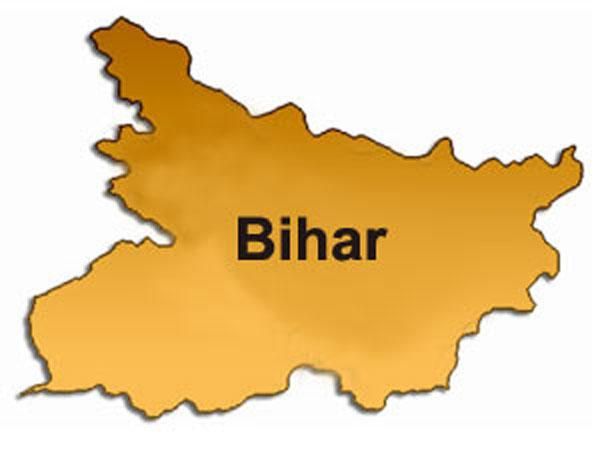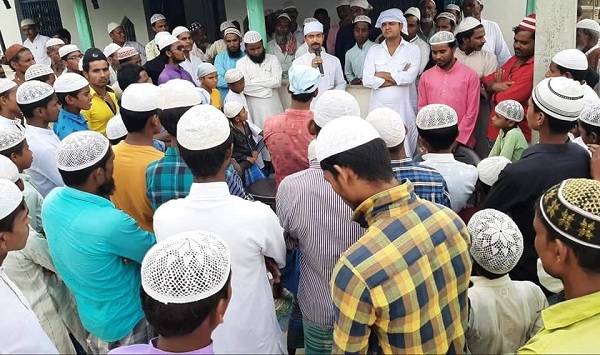
by admin | May 25, 2021 | News

Press conference of Grand Alliance, ‘Resolution of change’ continues.(File Photo)
NEW DELHI: It was a strategic failure on the part of the Congress to have remained assured of the support from the Muslim community during the Bihar Assembly elections. As made evident by the results, the Congress’ lack of work in the ground made it lose heavily, especially in the Seemanchal region, say party leaders.
The Congress Minority leaders were ignored in campaigning and micro managing the elections in the Muslim dominated areas, a Congress leader said. In the whole state, it was presumed that the Muslims would vote for the Grand Alliance, but they were divided in Seemanchal where the AIMIM won five seats and led to the loss of seats for the alliance.
In Kishanganj, the Congress candidate could manage the win by a close margin of around 1,000 votes as the AIMIM got more than 41,000 votes.
While former Union Minister Shakil Ahmed Khan maintained, “In the last minutes, the administration gave the certificate to the NDA candidates and winners became losers”.
He cited the case of two constituencies where the candidates were defeated after being declared winner.
But another leader Shakiluzaman Ansari said he had flagged the issue of the Muslim voters in meetings.
He said that he had categorically conveyed that the Muslims in their dominated areas should not be taken for granted in view of the AIMIM being in the fray.
“I was ignored and only Imran Pratapgarhi was campaigning. But to micro manage the elections, senior leaders of the state had to do a lot in the areas,” said Ansari.
Neither the skills of former Union Minister Shakil Ahmed were used nor was Ansari given the importance. It was only Tariq Anwar and Imran Pratapgarhi, who campaigned and the result of all is that the Grand Alliance missed the bus with only 12 seats.
The opposition Mahagathbandhan ended up with 110 seats, with the Rashtriya Janata Dal winning 75 seats, the Congress 19 and the Communist Party of India-Marxist-Leninist (Liberation) winning 12. The Communist Party of India and the Communist Party of India-Marxist won two seats each.

by admin | May 25, 2021 | Muslim World, Opinions
 By Syed Ali Mujtaba
By Syed Ali Mujtaba
Muslims are splintered in India and their diversity is synonymous with Indian. There is a Seemanchal region in the state of Bihar where there is significant but distinct Muslim population that begs attention. These Muslims are quite different from the general perception about the Muslims in India.
The Seemanchal region exists in Bihar that is close to the international border of Nepal and Bangladesh. It is a landlocked region comprising four districts; Purnea, Katihar, Kishanganj and Araria. The region is insulated from the rest of the state and the country. The distance between Seemanchal and state capital Patna is about 368 km while Assam is barely 300 KMs.
In many ways, Seemanchal is different from the rest of Bihar and the country. The most obvious difference is the demographic profile of the region. The Muslim population in Seemanchal is 47% Muslim whereas Bihar’s state-wide average of Muslim population 17%. Of the 1.08 crore population in Seemanchal, there are 49 lakh Muslims in this region. The proportion of Muslims in the four districts of Seemanchal are; Kishanganj: 68 percent, Katihar: 44.5 percent, Araria: 43 percent, Purnea: 38.5 percent.
While in the rest of Bihar, Muslims are largely concentrated in the urban areas, in the Seemanchal region, Muslims population is concentrated in the rural areas. Seemanchal Muslims are poor peasants and their average landholdings are small.
The other distinct feature of the Seemanchal region is that here the Hindu population is much lower than that of the Muslims and the dominant caste of the Hindus are nearly absent here more particularly is the Yadav caste.
Linguistically Seemanchal is considered part of the greater Mithila region but the region is divided on three distinct linguist differences i.e. Surjapuri, Kulhaiya and Bengali languages. The Seemanchal region is peculiar due to Surjapuris, Kulhaiyas and Shershahbadis communities.
The Surjapuri community holds considerable influence in the Seemanchal region. According to George Grierson in the Linguistic Survey of India, Surjapuris have Koch origin and they speak a dialect similar to the Koch Bengali of Malda.
Shershahbadis are of Bengali origin but have a different history. They are said to be soldiers in the army of Sher Shah Suri. They settled initially in the Gaur region in Bengal but they were displaced by the Mughals and they settled in the Seemanchal region and started doing cultivation. They converted to Islam later and followed the ‘Ahle Hadis’ school of thought whose guiding principles are Quran and the tradition of the prophet. That’s how Shershahbadis differentiates themselves from the majority of Muslims in Seemanchal who follow syncretic traditions.
Kulhaiya are said to have come from Hadhramaut region of eastern Yemen. They were brought as soldiers and worked with the Faujdars of Purnea, who ruled the autonomous region headquarter at Purnea and the surrounding places. Kulhaiyas later became an agrarian community marrying the locals and settlers from other parts of the country. As a result of the diverse linguistic influences, Kulhaiya dialect is much more mixed than the other communities. Kulhaiya had to suffer a great deal during the British rule and were declared criminal tribes by the colonial rulers.
Kulhaiya and Shershahbadis come under Other Backward Caste category but Surjapuris do not have any such reservation. The political rivalries in the Seemanchal region are centered on these three categories. In terms of political representation, Kulhaiya fare better but now Surjapuris are gradually catching up. There is presence of Ansari caste in the Seemanchal region but they are politically underrepresented.
Seemanchal region is considered to be one of the most backward areas within Bihar. The average literacy rate of the four districts (Araria, Purnea, Kishanganj and Katihar) is 35 percent against Bihar’s average of 64%. The four districts grossly lack development.
In terms of general education the region is quite backward. Pothia is the most illiterate block not only in India but in the entire Asia. In Seemanchal there is huge shortage of schools and colleges. There are only two constituent colleges in Kishanganj for a 17 lakh population. There is only one teacher in Nehru College where two thousand students study. There are no medical or engineering colleges and there are no technical institutes. Purnea University, the only university, came into existence just two years ago in 2018.
The Seemanchal region is affected by floods every year. The devastation caused by floods is huge. Most of the year, floods submerge the area. Due to floods paddy crops usually get destroyed. Sometimes even the second or third crop also gets affected due to floods. It is common to see children wading through flooded fields to catch fish with bare hands to supplement their families’ income.
The Seemanchal region is home to more than one crore population but the health care facilities there are appalling. Just like lack of government schools and colleges, there is little public health care system in place. In the absence, qualified medical practitioners quacks are having a field’s day in the region.
In terms of infrastructural needs Seemanchal is the least developed region. The main roads vanish every few kilometers and interior roads in villages are merely dirt paths. Roads are full of potholes and the bus rides are bone rattling. The rail connectivity to the Seemanchal region is pathetic. The electrical connection is very poor in rural areas and no electrical equipment works here. The condition of electricity is better in the urban areas but power shortage is the major problem in the region. Then the problems of unemployment, illiteracy are rampant in the region. Seemanchal is home to one of the poorest Muslim region in India. Here the average per capita income is 10,000 as against the state average of 14,574.
The combined effect of language, geography, religion and poverty makes the Seemanchal region one of the most underdeveloped areas in the country. Many blame it on the politics of the region which does not address the developmental problems of the region and cater to the state and center centric politics. Out of 243 assembly seats in Bihar, Seemanchal region sent 27 legislatures to state assembly. These seats are divided among the dominant political formation of the state that cares little about the development needs of the Seemanchal region.
There is a growing consciousness among the locals now to get consolidated under one political formation to make any difference to the region. However, in the absence of their own political formation, outside elements politically divide them for votes. There is certainly a need for the wakeup call in the region and this alone may give a new impetus to the development of the Seemanchal region.
——–
Syed Ali Mujtaba is a journalist based in Chennai. He hails from Bihar. He can be contacted at syedalimujtaba2007@gmail.com


